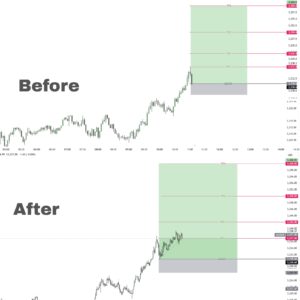The Forex market is one of the most dynamic and liquid financial markets in the world, with over $7.5 trillion traded daily. For traders looking to capitalize on currency movements, Forex signals play a crucial role in simplifying decision-making. Whether you’re a beginner or an experienced trader, understanding Forex signals can help you maximize profits while minimizing risks.
What Are Forex Signals?
Forex signals are trade recommendations that provide traders with specific entry and exit points for currency pairs. These signals are generated by expert traders, algorithmic systems, or AI-powered analytics tools based on technical analysis, fundamental analysis, or market sentiment.
How Do Forex Signals Work?
Forex signals typically include:
✅ Currency Pair: The specific forex pair to trade (e.g., XAU/USD, EUR/USD).
✅ Entry Price: The ideal price level to enter a trade.
✅ Stop-Loss (SL): A safety measure that closes the trade if the market moves against the prediction.
✅ Take-Profit (TP): The target price where profits will be taken automatically.
✅ Trade Direction: Buy (Long) or Sell (Short).
Types of Forex Signals
There are different types of Forex signals based on their source and strategy:
1. Manual vs. Automated Signals
📌 Manual Signals: Sent by experienced traders or analysts who analyze market trends.
📌 Automated Signals: Generated by AI algorithms, trading bots, or machine learning models.
2. Free vs. Paid Signals
💰 Free Signals: Offered by communities or trading groups with no cost.
💰 Paid Signals: Premium signals provided by experts, often requiring a subscription fee.
3. Fundamental vs. Technical Signals
📊 Technical Signals: Based on indicators like Moving Averages, RSI, Fibonacci retracements.
📈 Fundamental Signals: Derived from economic news, interest rates, GDP reports, and inflation data.

Profitability of Forex Signals
Forex signals can be highly profitable if used correctly. Some traders have reported consistent monthly profits by following reliable signal providers. However, profitability depends on factors like:
✔️ Risk-Reward Ratio: Ensuring take-profit levels are at least twice the stop-loss amount.
✔️ Market Conditions: Trending markets provide better results for signals than choppy or volatile conditions.
✔️ Execution Speed: Some signals require instant execution to be effective.
✔️ Broker Selection: A low-spread, fast-execution broker can improve profitability.
A disciplined trader who follows risk management principles and only risks 1-2% of their capital per trade can achieve long-term success with Forex signals.
Risks of Using Forex Signals
Despite the potential for profits, Forex signals come with significant risks:
⚠️ Scam Providers: Many signal providers make unrealistic claims about profitability. Always verify performance records before subscribing.
⚠️ Delayed Execution: Market conditions change rapidly. If you enter a trade too late, the setup may no longer be valid.
⚠️ Over-Reliance on Signals: Depending solely on signals without understanding the market can lead to losses when conditions change.
⚠️ High Leverage Risks: Some signals suggest high-risk trades with leverage, which can amplify losses.
⚠️ No Risk Guarantees: Even professional traders experience losses. No signal provider can guarantee 100% accuracy.
Risk Management Strategies When Using Forex Signals
To minimize risk, traders should:
✅ Use Stop-Loss Orders: Always follow recommended stop-loss levels to prevent major losses.
✅ Diversify Trades: Avoid putting all capital into one trade; spread risk across multiple trades.
✅ Manage Lot Sizes: Risk only a small percentage of your trading capital per trade.
✅ Monitor Signal Performance: Regularly review which signals perform best and adapt accordingly.
✅ Have a Backup Plan: Don’t rely on signals alone; learn how to analyze the market independently.
How to Choose a Reliable Forex Signal Provider
Not all Forex signal providers are trustworthy. To find a legit provider, consider:
1️⃣ Performance History: Look for verified past performance and accuracy rates.
2️⃣ Transparency: Providers should clearly state entry, stop-loss, and take-profit levels.
3️⃣ Risk Management: A good provider always includes stop-loss recommendations.
4️⃣ Real-Time Updates: Ensure the signals are sent in real-time via Telegram, WhatsApp, or Email.
5️⃣ No Hidden Fees: Avoid providers that demand upfront payments without trial options.
Best Platforms to Receive Forex Signals
📲 Telegram Channels – Many top Forex signal providers share their signals here.
📩 Email Alerts – Some premium services offer signals via email.
📉 Forex Signal Apps – Mobile apps provide instant notifications for trading opportunities.
Final Thoughts
Forex signals can be a game-changer in your trading journey, but they should be used wisely. While they offer high-profit potential, they also carry risks. Always verify the credibility of the provider, practice risk management, and avoid over-reliance on signals. A well-balanced approach combining signals with personal market analysis can lead to consistent profitability.


